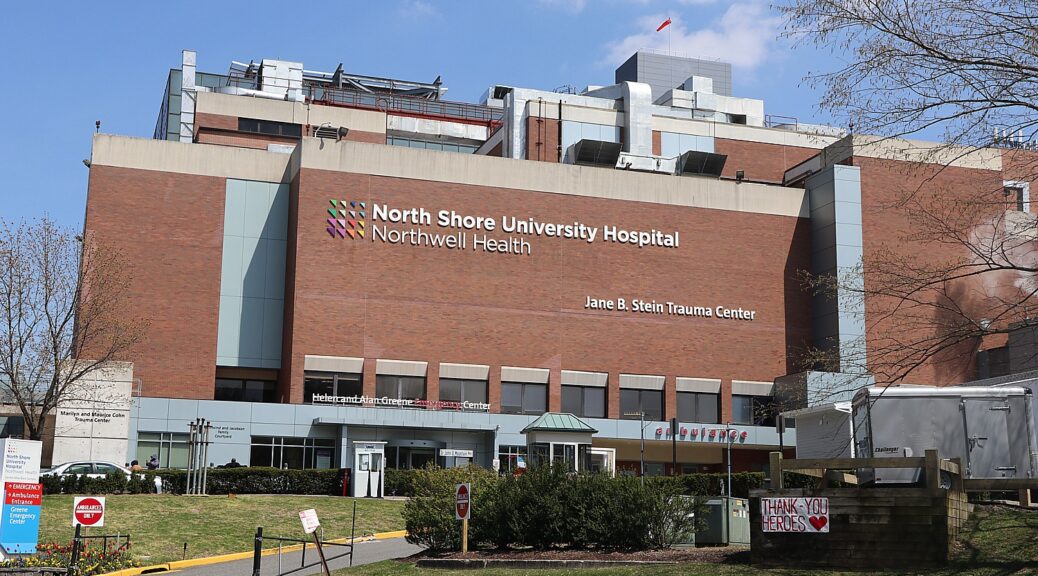Actions are the latest in a series of steps the Biden Administration has taken to eliminate hidden junk fees and lower prescription drug costs

Today, President Biden announced a series of new actions under a core pillar of his “Bidenomics” agenda to lower health care costs and crack down on surprise junk fees for American families and consumers. Since the beginning of his Administration, President Biden has passed historic legislation to lower health care costs for tens of millions of Americans, took on Big Pharma to finally allow Medicare to negotiate lower prescription drug prices, and took action to eliminate hidden fees in every sector of the economy. Today, the Administration is taking additional steps to continue to deliver on those promises.
The President announced:
- The Biden-Harris Administration is cracking down on junk insurance. New proposed rules would close loopholes that the previous administration took advantage of that allow companies to offer misleading insurance products that can discriminate based on pre-existing conditions and trick consumers into buying products that provide little or no coverage when they need it most. These plans leave families surprised by thousands of dollars in medical expenses when they actually use health care services like a surgery. If finalized, the rule would limit so-called “short-term” plans to truly short time periods, close loopholes made worse by the previous administration, and establish a clear disclosure for consumers of the limits of these plans.
- The Administration is releasing important guidance on rules against surprise medical billing. Biden-Harris Administration rules are already preventing as many as 1 million surprise medical bills every month. New guidance will help stop providers from gaming the system by evading the surprise billing rules with creative contractual loopholes that still leave consumers with unexpected costs.
- The Administration is announcing new steps to protect consumers from unfair medical debt. For the first time in history, the Consumer Financial Protection Bureau, HHS, and Treasury are collaborating to explore whether health care provider and third-party efforts to encourage consumers to sign up for these products are operating outside of existing consumer protections and breaking the law. Medical credit cards and loans often lead to higher costs without consumers fully understanding the risks.
- The Department of Health and Human Services is releasing a new report showing that nearly 19 million seniors and other Part D beneficiaries are projected to save $400 per year on prescription drugs when President Biden’s $2,000 out-of-pocket cap goes into effect. It’s also releasing state by state data that demonstrates how seniors across the country are helped by just one element of the President’s robust agenda to lower prescription drug prices.
These actions are the latest in a series of steps the Administration has taken to address hidden junk fees across industries, including: cracking down on bounced check and overdraft fees in the banking industry, which is saving consumers more than $5 billion every year; proposing rules to require airlines to disclose all of their fees up front and successfully pushing a number of airlines to end family seating fees; and mobilizing private sector action to eliminate hidden junk fees for concert and sports tickets.
Cracking down on junk insurance
The Affordable Care Act has helped tens of millions of Americans access high-quality, affordable health insurance and protects Americans from being discriminated against because of pre-existing conditions. But actions from the previous administration allowed insurance companies to take advantage of loopholes in the law and sell “junk insurance” plans that evade these protections. These “junk insurance” plans leave families surprised by thousands of dollars in bills, often because the insurance plan claims they have a pre-existing condition that isn’t covered. For example, a man in Montana faced $43,000 in health care costs because his insurance plan claimed his cancer was a pre-existing condition, and a Pennsylvania woman was surprised by nearly $20,000 in bills for an amputation her junk plan refused to cover. Today, the Biden-Harris Administration is proposing rules to crack down on this junk insurance, as part of the latest efforts by the Administration to eliminate hidden and junk fees in every industry across the economy. These actions will reduce scam insurance plans that offer really no insurance at all.
- “Short-term” plans must be truly short-term. Under the new rules, if finalized, plans that claim to be “short-term” health insurance would be limited to just 3 months, or a maximum of 4 months, if extended – instead of the 3 years that junk plans can offer today as a result of changes made by the previous administration.
- Income replacement “fixed indemnity” plans cannot mimic comprehensive health insurance. Under the proposed rules, plans that want to be exempt from the rules for health insurance — because they are designed to replace lost income when people get sick, rather than provide full medical coverage – have to live up to their original purpose and cannot be designed like comprehensive health insurance. This means that plans would need to make clear that people signing up for these plans would get a defined benefit, like $100 per day of illness, instead of thinking that they have comprehensive insurance. This proposed rule aims to prevent Americans from being on the hook for high medical costs, like a woman who needed an amputation and was left with $20,000 in medical debt because her plan did not include comprehensive coverage.
- Plans have to clearly disclose limits. Under the proposed rules, plans are required to provide consumers with a clear disclaimer that explains the limits of their benefits, including to existing consumers currently enrolled in these plans.
Preventing surprise medical billing
Before President Biden took office, millions of people received surprise bills for health care they thought was in-network care covered by their health plan. This could include when people need emergency care and are taken to the nearest hospital, or when a pregnant woman delivers her baby at an in-network hospitals only to find out that the anesthesiologist who cared for her is actually out-of-network. These surprise bills can cost people hundreds or thousands of dollars, averaging between $750 to $2,600. The Administration is protecting millions of consumers from surprise medical bills through the implementation of the No Surprises Act, which has already protected 1 million Americans every month since January 1, 2022 from unfair, undeserved out-of-network charges and balance bills.
The Biden-Harris Administration is taking an important next step to protect consumers from surprise medical bills by issuing guidance to clarify that payers cannot use loopholes to avoid surprising billing protections:
- Ending abuse of “in-network” designation. Today, some health plans contract with hospitals, but try to claim that they are not technically “in-network” – which can expose consumers to higher payments when they have to make a hospital visit. The Administration today is making clear this is not allowed under federal law: health care services provided by these providers are either out-of-network and subject to the surprise billing protections, or they are in-network and subject to the ACA’s annual limitation on cost-sharing, further protecting consumers from excessive out-of-pocket costs.
- Facility fees treated like other health care costs. The Administration is also concerned about an increase in patients being charged “facility fees” for health care provided outside of hospitals, like at a doctor’s office. These fees are often a surprise for consumers. The Administration today is making clear that health plans and providers must make information about these facility fees publicly available to consumers, as well as other price information for services and items they cover or provide. In addition, nonparticipating providers and nonparticipating emergency facilities cannot evade the protections of the No Surprises Act, including the prohibition on balance billing, by renaming charges otherwise prohibited under the No Surprises Act as “facility fees.”
Protecting consumers from unfair medical debt
Increasingly, health care providers are signing up patients for third-party medical credit cards and loans to help pay for care. These credit cards often include teaser rates and deferred interest features that lead to higher costs for consumers, and may be offered even when low- or no-cost alternatives, such as zero-interest payment plans, financial assistance, or health coverage may be available. Health care providers may be promoting these products because they could allow providers to get paid faster, outsource servicing and collections costs to third parties, receive a higher payment from consumers who otherwise would pay a discounted price for care, and in some circumstances, receive a share of the interest revenue gained by the third-party financial company.
Use of these products may complicate insurance coverage and the availability of financial assistance, and consumers may not fully understand the risks associated with these products, leading to higher costs and negative impacts on consumers’ financial, physical, and emotional well-being.
For the first time ever, the Consumer Financial Protection Bureau (CFPB), HHS, and Treasury are collaborating on the needs of health care consumers by releasing a Request for Information (RFI) to learn more about this emerging practice and solicit comment on potential policy actions. Part of this RFI will explore whether providers are operating outside of existing consumer protections, because once medical bills are placed on medical credit cards, there may be gaps in how various consumer protections apply.
New data shows nearly 19 million seniors and other Medicare beneficiaries will save an estimated $400 per year in prescription drug costs because of President Biden’s out-of-pocket spending cap
Thanks to President Biden’s Inflation Reduction Act, out-of-pocket spending on prescription drugs at the pharmacy will be capped at $2,000 per year for Medicare Part D enrollees starting in 2025. Today, the Department of Health and Human Services (HHS) released data showing that 18.7 million (or 1 in 3) seniors and people with disabilities who are enrolled in Part D plans will save, on average, $400 per year when the $2,000 cap and other Inflation Reduction Act provisions go into effect in 2025. And some enrollees will save even more: 1.9 million enrollees with the highest drug costs will save an average of $2,500 per year starting in 2025. Overall, the law’s Part D benefits provisions will reduce enrollee out-of-pocket spending by about $7.4 billion annually.
To view data broken down by state and demographic, visit LINK.
Today’s actions follow significant milestones achieved last week in implementing President Biden’s historic law to lower health care and prescription drug costs. On June 30, the Centers for Medicare and Medicaid Services released revised guidance that describes how they will negotiate lower prescription drug prices for seniors later this year. The first ten drugs selected for negotiation will be announced by September 1, 2023. Also last week, the $35 monthly cap on insulin for Medicare Part B beneficiaries went into effect. Already 1.5 million Medicare Part D beneficiaries were saving up to hundreds of dollars per month on insulin costs because of the Inflation Reduction Act, and many more will benefit from these cost savings starting this month.



